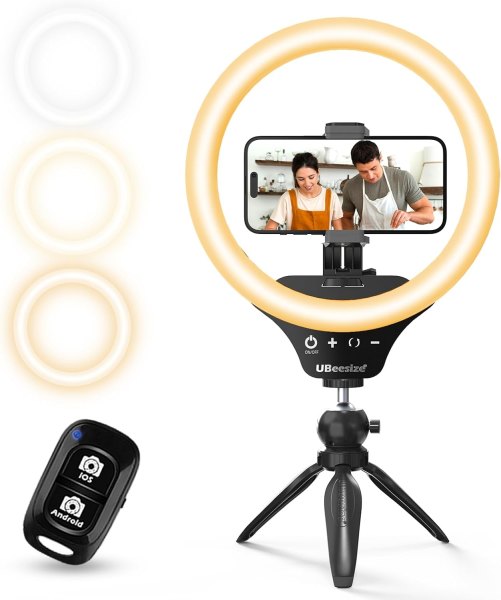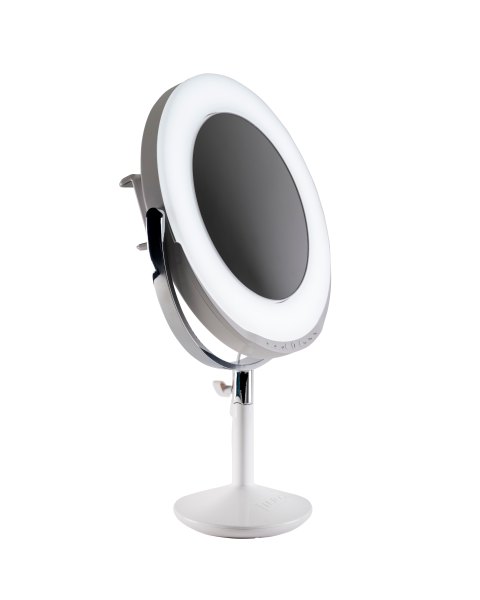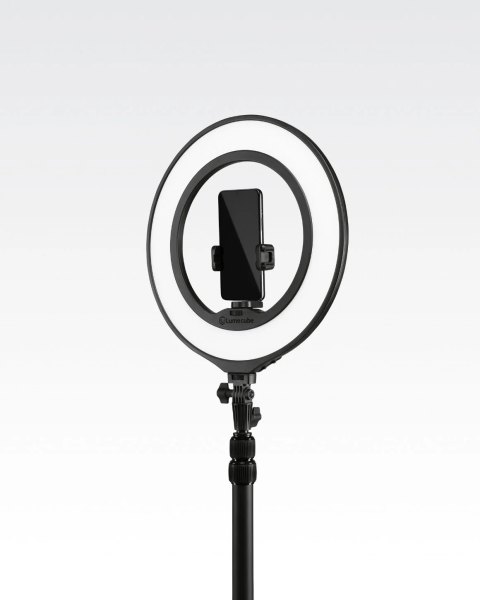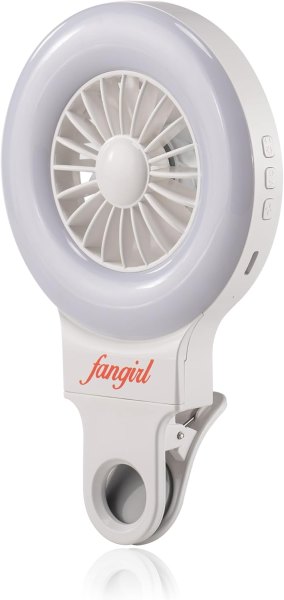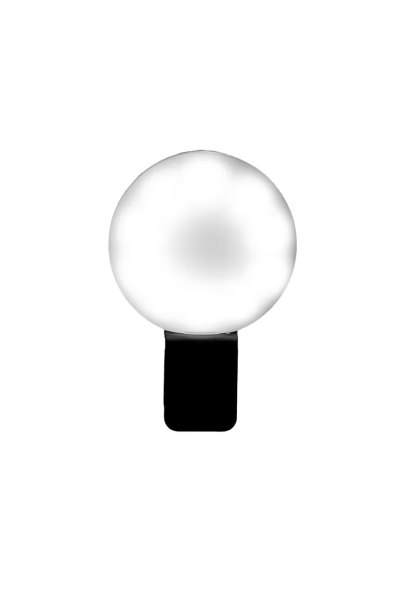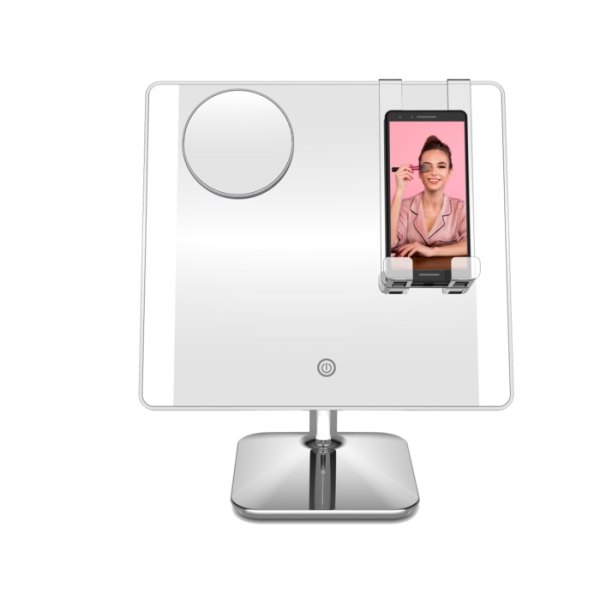If you’re like us, you’ve likely spent an entire Zoom work call or friendly FaceTime conversation staring at yourself and picking apart every little flaw. “Do I really look that old? Are my wrinkles that obvious?!” Technology can really do a number on our self-esteem—but the culprit may just be the lighting. Sure you can use filters and makeup to hide fine lines and shadows, but all it really takes to look younger on camera is a ring light. “A ring light not only illuminates the face to blur flaws, but it also allows you to always look professional, well-lit and camera-ready,” explains Shaya Mulcahy, Chief Marketing Officer of Skin Experts. Best of all, because you place a ring light in front of you, no one can tell it’s the light that’s making you look so great. Read on to discover the best ring lights—plus, how and why they can help you look years younger.
Why use a ring light?
The circular design evenly illuminates the face and creates a flattering, youthful glow when joining a video call, filming content or taking selfies, explains Katie Walker, beauty expert and Deputy Editor of Beautyanswers.co.uk. Adds Mulcahy, “they’re fantastic tools for creating soft, even lighting, which minimizes shadows and helps smooth out skin imperfections. This is especially helpful for women over 40, as good lighting can reduce the appearance of fine lines and wrinkles, making the skin look smoother and more radiant on camera.”
Also great? “As we age, our eyes struggle to see fine details, making makeup application more challenging,” says Kelly Mondora, founder of Ilios Lighting. “Most makeup mirrors rely on a small, concentrated light source, which is often too dim. When the light is brightened, the limited area it illuminates can cause significant eye strain.” A ring light, however, distributes light evenly over a larger surface area and incorporates an additional layer of diffusion, she explains. “This creates a light that is both bright enough for clarity and soft enough to avoid discomfort. This makes ring lights particularly beneficial for aging eyes, allowing users to see details they might otherwise miss with a standard mirror.” Bonus, it makes finding and plucking those errant chin hairs even easier.
What to look for in a ring light
All the experts we spoke to recommend looking for a ring light with adjustable brightness settings and color temperature options. “This allows for customization based on skin tone and ambient lighting, ensuring you always look your best,” says Walker.
Also, opt for one that’s a LED ring light. It’s the most energy-efficient and provides bright, even illumination, advises Mulcahy. She also suggests taking size, portability, battery power and price into account. “I recommend a ring light that is 12-18 inches, is cordless so you can charge it up before you need it and get that glow even when you’re on the go, has a color temperature between 2700K and 7500K, so you can match any environment and offers brightness control so you can dial in your needed level.” An adjustable tripod is a huge bonus, she adds.
How to use a ring light
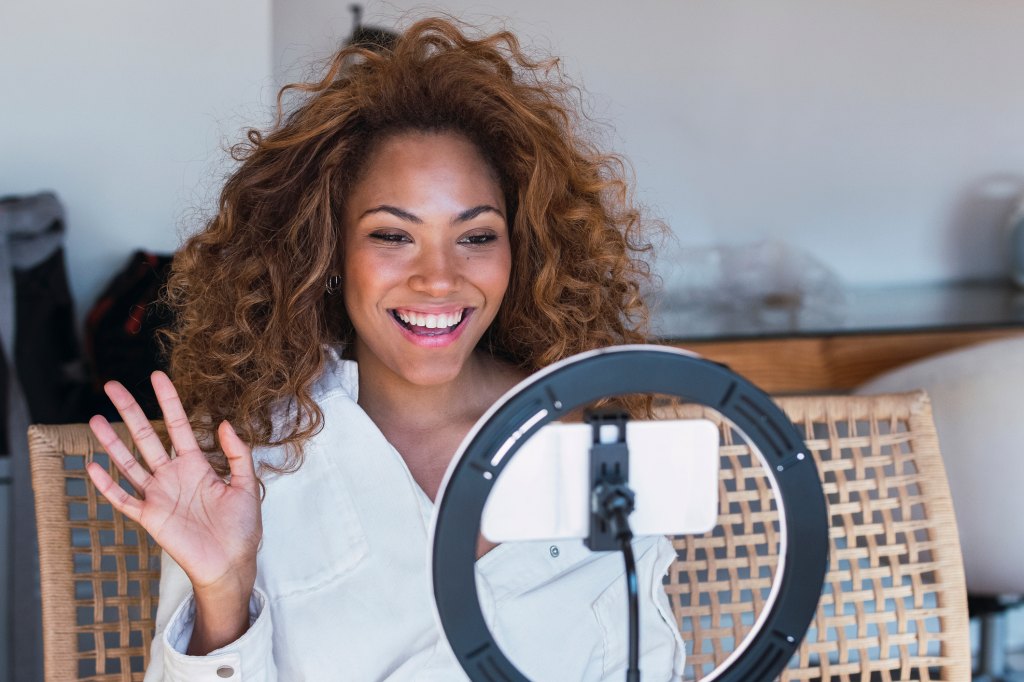
1. Position the stand
Most ring lights come with a tripod or adjustable stand. Set it up at a height that suits your needs. For face lighting, the center of the ring light should be at about eye level, but you can adjust it based on your specific requirements.
Also, the further away you are from the light, the softer the light will be. If you want a more intense effect, move closer to the light. Just be careful not to get too close to avoid overexposure or harsh shadows.
2. Adjust the brightness
Many ring lights come with a dimming feature, allowing you to control the intensity of the light based on your preference or environment. Expert tip: If you’re not sure how much light you need, start with the lowest brightness level and increase gradually.
3.Adjust the color temperature
Some ring lights come with adjustable color temperature settings (warm vs. cool light). Warm light provides a soft, natural feel and is often better for applying makeup. Cool light can make colors pop and is generally better for photography, on-camera meetings or creating a clean, crisp look.

